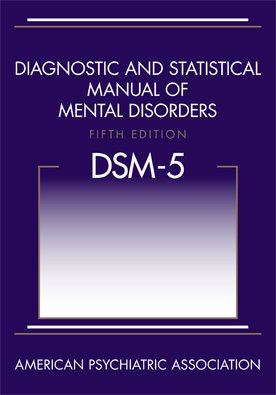DSM-5, the latest psychiatrist bible, is warning of the dangerous physiological impact of caffeine intoxication.
An overdose of caffeine is among the mental disorders included in the latest edition of the Diagnostic and Statistical Manual of Mental Disorders (DSM-5) released on May 22.
Symptoms of the disorder include restlessness, nervousness, excitement, red face, gastrointestinal upset, muscle twitching, rambling speech, sleeplessness, rapid and irregular heartbeat, according to Live Science.
The findings about the mental impacts of a caffeine overdose come from the list of mental disorders compiled by the American Psychiatric Association (APA).
The DSM is the go-to guide for a myriad of professionals seeking to understand mental disorders including physicians, psychologists, social workers, nurses, occupational and rehabilitation therapists, and counselors, according to the APA website.

DSM-5 is warning of the dangerous physiological impact of caffeine intoxication
Caffeine intoxication had previously been listed as a disorder but in the latest edition of the DSM, it also includes the disorder associated with caffeine withdrawal.
Symptoms of caffeine withdrawal are described as including headache, fatigue, difficulty concentrating, depressed mood and other issues.
“Caffeine is invading our society more and more,” Alan Budney, who served on the DSM-5 working group for substance-use disorders, previously told Medscape Medical News in 2011 about why caffeine withdrawal was an important disorder to investigate.
“There’s concern enough to consider this topic seriously, even though it’s probably one of the more controversial issues faced by our work group,” he added.
Caffeine is considered the most widely used, behaviorally active drug in the world, alongside other chemicals that can prompt mental disorders.
The other powerful chemicals include alcohol, nicotine, cannabis, hallucinogens and other mind-altering substances.
DSM-5, an update to one of the most important manuals in mental health – known as the bible of psychiatry – is to be published later.
Controversy and criticism has surrounded work on the fifth version of the Diagnostic and Statistical Manual of Mental Disorders (DSM-5).
Some say the rulebook will turn normal behavior, like grief or childhood temper tantrums, into mental illness.
The manual is used mainly in the US, but is influential around the world.
This is the first update to the volume since 1994. Experts in mental health have been taking account of the latest scientific developments to update ways of diagnosing mental disorders.
The exact changes will be presented at a meeting of the American Psychiatric Association (APA).
There will be new categories including binge eating disorder, disruptive mood dysregulation disorder and hoarding disorder. Meanwhile Asperger’s syndrome will become part of autism spectrum disorders rather than having a section of its own.
The publication will have no effect on how people are diagnosed in countries which use guidelines from the World Health Organization (WHO).

Controversy and criticism has surrounded work on the fifth version of the Diagnostic and Statistical Manual of Mental Disorders (DSM-5)
Prof. Peter Kinderman, head of the Institute of Psychology at the University of Liverpool, said: “[DSM-5] will lower many diagnostic thresholds and increase the number of people in the general population seen as having a mental illness.”
He said “normal grief” would now be classed as a major depressive disorder and childhood temper tantrums would be a symptom of disruptive mood dysregulation disorder.
Also: “A wide range of unfortunate human behaviors, the subject of many new year’s resolutions, will become mental illnesses – excessive eating will become <<binge eating disorder>>, and the category of <<behavioral addictions>> will widen significantly to include such <<disorders>> as <<internet addiction>> and <<s** addiction>>.”
There is also criticism of the way DSM classifies diseases based on symptoms. There are efforts to harness advances in genetics and neuroscience to diagnose people based on the cause rather than the symptoms of the illness.
The director of the US government’s National Institute of Mental Health said DSM had a “lack of validity”.
Dr. Thomas Insel posted a blog saying: “Unlike our definitions of ischemic heart disease, lymphoma, or AIDS, the DSM diagnoses are based on a consensus about clusters of clinical symptoms, not any objective laboratory measure.
“In the rest of medicine, this would be equivalent to creating diagnostic systems based on the nature of chest pain or the quality of fever.”
In some areas the distinction between disorders is narrowing. Autism, attention deficit-hyperactivity disorder, bipolar disorder, major depressive disorder and schizophrenia are all classed as separate disorders based on their symptoms.
However, research published in the Lancet medical journal in February showed all five disorders shared several genetic risk factors.
Dr. David Kupfer, the chair of the DSM-5 task force, said: “The changes to the manual will help clinicians more precisely identify mental disorders and improve diagnosis while maintaining the continuity of care.
“We expect these changes to help clinicians better serve patients and to deepen our understanding of these disorders based on new research.”
[youtube m7RCgCkrXXo]
Sex addiction has traditionally been written off as an “excuse” for philandering celebrities, but a new study suggests that it is a real disorder.
The disorder, in which sufferers have relentless sexual urges that feel out of their control, is even being considered for inclusion in America’s “bible” that lists all mental conditions, the Diagnostic and Statistical Manual of Mental Disorders (DSM).
Until now, however, researchers have been struggling to define what hypersexual disorder, as sex addiction is formally known, actually is.
Under one proposed definition, a person who simply has frequent sex would not be diagnosed with it, said study researcher Rory Reid, an assistant professor and research psychologist at the University of California, Los Angeles (UCLA).
But a person whose sexual activities are excessive, frequently used to cope with stress and interfere with their ability to function in daily life may meet the criteria for the disorder.
In a new study from the university, the researchers emphasized they are not trying to turn common behaviors – such as having a lot of sex, or watching pornography – into disorders.
Instead, people with hypersexual disorder report feeling out of control, and act on their sexual urges, disregarding the repercussions.
“They might consider the consequences momentarily, but somehow feel their need for sex is more important, and choose sex even in situations where such choices might cause significant problems or harm, such as job loss, relationship problems or financial difficulties,” he told the website MyHealthNewsDaily.
The results of the study, published online in the Journal of Sexual Medicine, will be sent to the American Psychiatric Association.
In the UCLA study, hypersexual disorder was defined as “recurrent and intense sexual fantasies, sexual urges, and sexual behavior”, lasting at least six months.
To be diagnosed with the disorder, these sexual fantasies, urges and behaviors cause the patient distress, or interfere with some aspect of the patient’s life, such as the patient’s job or social life.
They must not be brought on by drugs or alcohol, or another mental disorder.
The conclusions were drawn after the researchers interviewed more than 200 people who had been referred to a mental health clinic, without knowing the reasons for their referral.
Of them, 150 were thought to have sexual behavior problems; the others had problems such as substance abuse.
Using the definitions above, 134 of the patients referred for sexual problems were diagnosed with hypersexual disorder.
And in 92% of cases, the professionals agreed on who should be diagnosed with the condition.
Doctors also asked patients to report which behaviors were most problematic for them, including masturbation, pornography viewing, sex with consenting adults, cybersex, telephone sex and frequenting strip clubs.
The majority who were diagnosed with hypersexual disorder said masturbation and pornography viewing were problematic.
Some patients reported losing jobs because they could not refrain from these behaviors at work, the study found.
Regarding the argument that being diagnosed with the disorder would provide an excuse to be unfaithful, Dr. Rory Reid said: “Having a disorder didn’t help them avoid consequences, such as divorce, but it is advantageous for them when they want to get help and change.”
He now wants to establish how common sex addiction is and whether these people have changes in their brain that are similar to those seen in people with addictions.
SEX ADDICTION SYMPTOMS
- Recurrent and intense sexual fantasies, sexual urges, and sexual behavior, lasting at least six months
- Excessive amounts of sex, frequently used to cope with stress.
- Sex interfering with the ability to function in daily life, e.g. job or social life
- Feeling out of control and having to act on sexual urges, even in situations it might cause significant problems or harm, such as job loss, relationship problems or financial difficulties
- The sexual fantasies, urges and behaviors must not be brought on by drugs or alcohol, or another mental disorder


